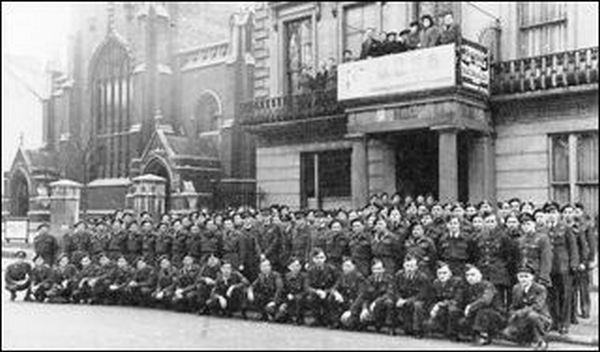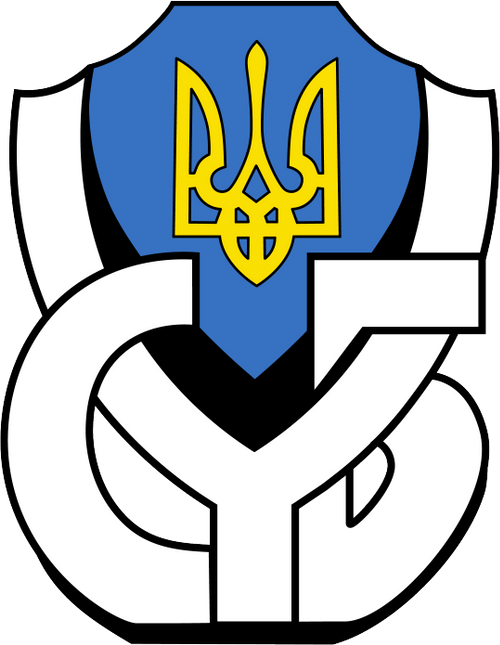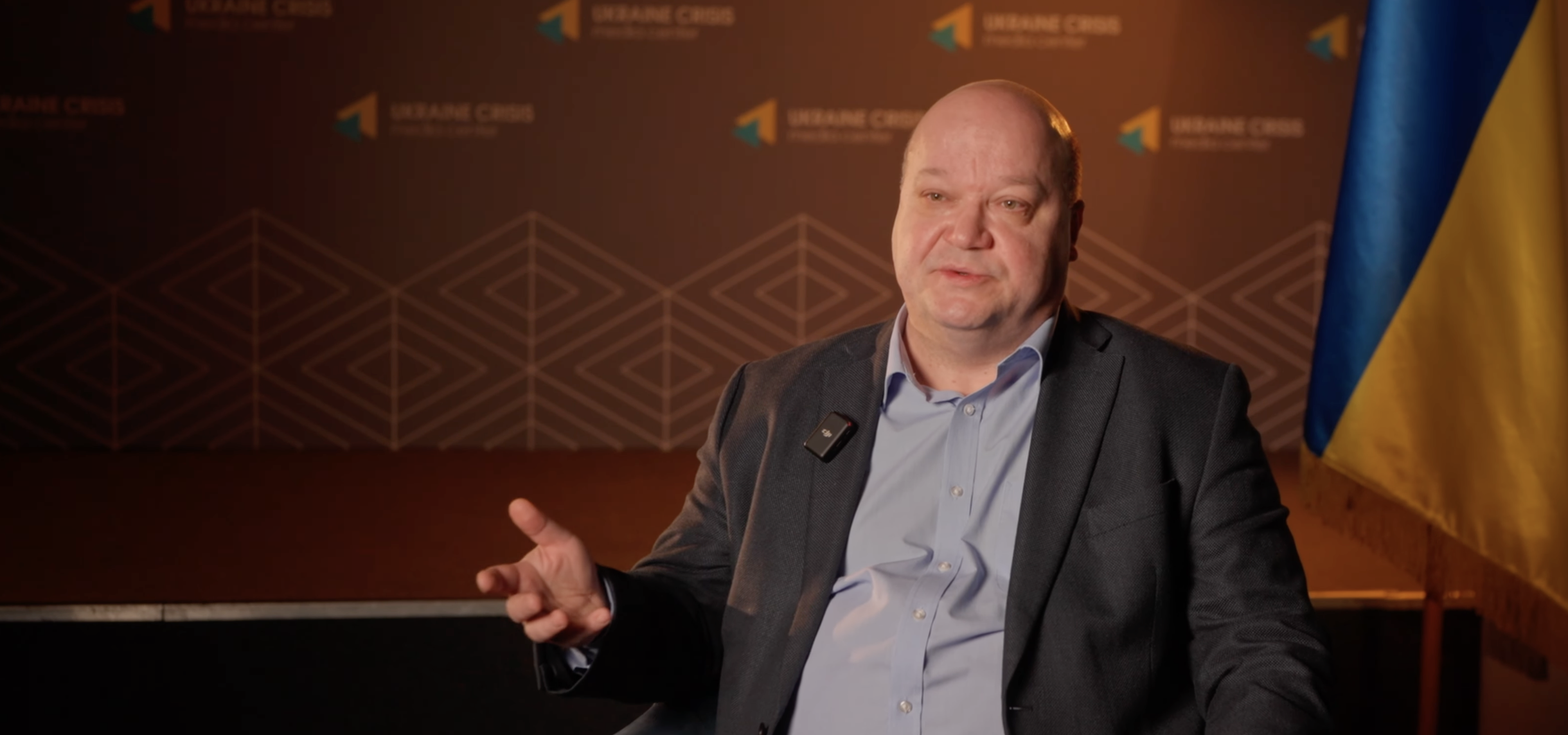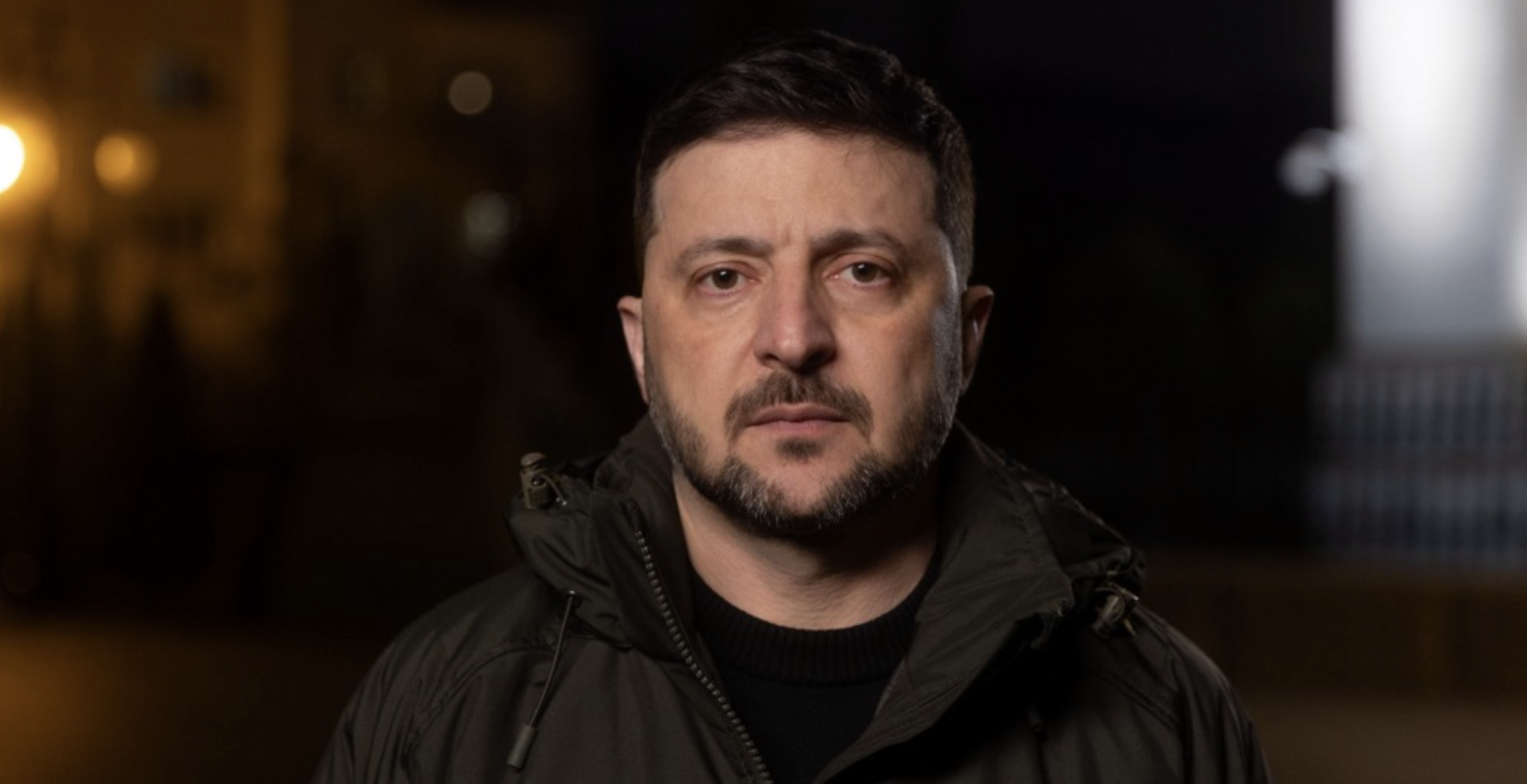
Who was the first Ukrainian on the British Isles, and how many Ukrainians are there now? The first Ukrainian communities before WWI
Speaking about Ukrainians in the United Kingdom, there are two things nobody knows for sure: when they first come to the British Isles, and how many of them live there now. It is very possible that the first Ukrainian Britton was the daughter of Kyivan Prince Yaroslav the Wise, Agatha, who arrived in Albion with her husband, Edward the Exile, in the mid-11th century.
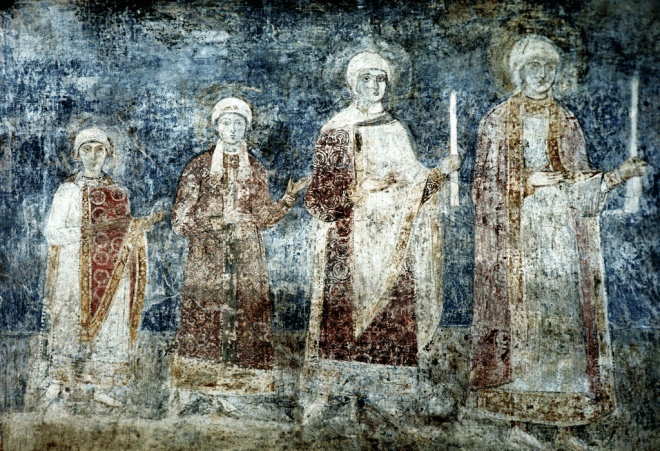
Daughters of Yaroslav the Wise. Fresco of the 11th century. The first on the right is presumably Agatha (Agafia)
As for the number of Ukrainians living in the U.K. now, an unofficial estimate for the mid-2000s was over 100,000 individuals who had Ukrainian citizenship or considered themselves to be Ukrainian. After the beginning of Russia’s full-scale invasion of Ukraine, the U.K. introduced schemes for Ukrainian refugees, having issued 142,500 visas to applicants as of June 28, 2022. By that time, 86,600 visa holders had arrived in the U.K.
The first U.K. communities of ethnic Ukrainians were formed in the late 19th to early 20th centuries of emigrants who were going to North America but did not make it for some reason or other. Some of them just did not have enough money to continue their journey. Others changed their minds, concluding that the developed British industry was no worse than Canadian yet-to-be-developed agriculture. The first such sizeable group consisted of migrants from Western Ukraine, mainly from the Austrian crown land of Galicia (now Halychyna), settled in Manchester, and grew to about 500 people by 1912. However, most of them either resettled in North America or returned to Galicia by the time the First World War broke out in Europe in 1914.
Ukrainians in the U.K. during and between the First and Second World Wars
During WWI, many Ukrainians temporarily stayed in the United Kingdom as part of Canadian armed forces. Almost all of them were from areas of central Ukraine along the Dnipro River, whereas Galicians, as Austrian citizens, were considered enemies and interned in Canadian camps.
One of the best-known Canadian Ukrainian warriors of that time is Filip Konowal from the Podillia village of Kutkivtsi – the only Ukrainian holder of the Victoria Cross, Britain’s highest and most prestigious award.
The Manchester Ukrainian community remained small after WWI – just about 150 individuals, including British-born children of pre-war immigrants. Pieces of the lacerated Ukrainian rushnyk drifted ashore in London, where members of the diplomatic missions of the Ukrainian People’s Republic (UNR) and the Western Ukrainian People’s Republic (ZNUR) were based. After the UNR mission was disbanded, its two members, Marian Melenevsky and Nicholas Gorbenko, continued to live and work in London. Other Ukrainians living there during the inter-war period included Vladimir Korostovetz, representative of Hetman Pavlo Skoropadskyi, Vladimir Kysilewsky, director of the Ukrainian Bureau (established in March 1931 by Jacob Makohin, a wealthy Ukrainian American), Danylo Skoropadskyj, son of Hetman Pavlo Skoropadskyi, as well as Eugene Lachowitch and Stephen Davidovich, representatives of the Organization of Ukrainian Nationalists (OUN).
The Second World War brought to the United Kingdom more Ukrainians, including active or former personnel of various armed forces involved in the war. There were also displaced persons and refugees, but again, a majority of these Ukrainian newcomers came as part of the Canadian forces. On Jan. 7, 1943, in Manchester, 37 of these servicemen established the Ukrainian Canadian Servicemen’s Association. By the end of the war, there were 1,500 active members and over 3,000 additional names on the association’s mailing list.
There were also about 1,000 Ukrainians from pre-war Poland who came to the U.K. and became members of the Polish Armed Forces under British command.
The Association of Ukrainians in Great Britain
Ukrainian Canadian and Polish warriors became the core of the Association of Ukrainians in Great Britain (AUGB), the largest Ukrainian community organization in the United Kingdom, whose members include ethnic Ukrainians and friends of Ukraine living in the UK. The AUGB was established at an inaugural general meeting held on 19-20 January 1946 in Edinburgh, following several months of preparation. The association was then joined by representatives of the OUN, Ukrainian Insurgent Army (UPA), and Hetmanite Association, as well as Sumon Petliura’s followers. In 1947-48 the AUGB membership increased considerably following the arrival in the country of Ukrainian European Voluntary Workers (displaced persons from Germany and Austria invited by the British government to work in the U.K. in sectors experiencing labor shortages) and former soldiers of the Galicia Division. By 1949, the number of AUGB members reached about 23,600, although about 4,000 emigrated to other countries, resigned from the Association, or otherwise became inactive.

The inaugural general meeting of the Association of Ukrainians in Great Britain, Edingburgh, Jan. 19-20, 1946
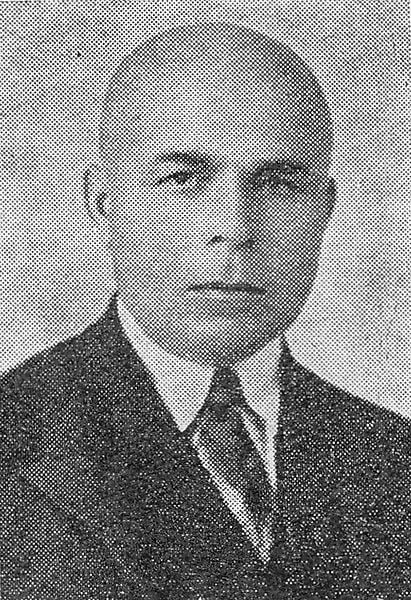
Nikita Bura (1896-1985), the first president of the Association of Ukrainians in Great Britain
However, as the saying goes, “Where there are two Ukrainians, there are three hetmans.” In 1949, the association split up: the OUN(B) led by Stepan Bandera and Hetmanites usurped the AUGB leadership and provoked 750 members of the OUN(M) led by Andriy Melnyk to quit the AUGB and establish an alternative organization, Federation of Ukrainians in Great Britain (FUGB).
In the first half of the 1950s, the total number of AUGB active members significantly dropped. About 2,000 members emigrated to other countries. A lot of others moved from post-war camps and hostels to private accommodations in towns and cities around the country, thus losing touch with the AUGB. As a result, only about 8,500 active members remained in the association by the end of 1955 there, and the membership continued to decline.
In 2011, the AUGB amended its articles of association to allow non-Ukrainians to join it as associate members without voting rights. By 2018, it had approximately 1,500 full and about 350 associate members. Their website calls the AUGB “the largest representative body for Ukrainians and those of Ukrainian descent in the U.K. It exists to develop, promote, and support the interests of the Ukrainian community in the U.K.” Corporate members of the AUGB include the Association of Ukrainian Women in Great Britain (formed in 1948), the Association of Ukrainian Teachers in Great Britain (formed in 1955), and the AUGB representative dance group Orlyk (founded in 1949).
The AUGB is a member of the Ukrainian World Congress (UWC) and the European Congress of Ukrainians (EKY), and over the years has worked with various organizations in Ukraine, including governmental and academic institutions.
After the Second World War: developing Ukrainian community infrastructure
After WWII, between 1946 and 1950, some 33,000-35,000 Ukrainians arrived in the U.K. They included those transferred from Italy as part of the Polish II Corps and former soldiers of the Galicia Division as well as those recruited from displaced persons camps under the European Volunteer Workers scheme.
By the early 1960s, the Ukrainian population in the U.K. was approximately 30,000. They had developed a diverse infrastructure, including a network of Ukrainian schools, churches, clubs, and old people’s homes, as well as choir and dance groups. The Ukrainian Youth Association in Great Britain (UYM-GB) and the Plast Ukrainian Scouting Organization in Great Britain (Plast-GB) had been established with offices in London and Manchester.
Oksana Paraszczak, who was the Plast-GB chair from 1977-1990, recollects:
“For me personally, Plast was an extremely important part of life, it is just my second family. And for children, it was always an opportunity to get to know plastuns from different countries and other scouts. At the beginning, we had seven stations, now there are only two left, in London and Manchester. The key problem was that many Ukrainians married aliens. Accordingly, their children tended to speak English: it is much easier grammatically than Ukrainian. And children, and people in general, naturally gravitate towards what is easier. For us, language is the biggest problem, which hinders us a lot in our work. But now the newcomers from Ukraine and their children speak Ukrainian. So there is hope.”
The collapse of the Soviet Union and independent Ukraine: a new wave of immigrants
As the Soviet Union drew the iron curtain a bit up in the second half of the 1980s, more Ukrainians started coming to the U.K., such as researchers who obtained grants from British universities. In 1991, after Ukraine restored its independence and it became much easier for Ukrainians to leave the country, economic difficulties triggered a new wave of migration to various parts of the world, including the U.K. Between 1991 and 2015, almost 13,900 Ukrainians acquired British citizenship.
Most of the Ukrainians who have come to the UK since the mid-1980s have been relatively young people of working age. As of 2007, according to estimates, 70% of them live in London. Ukrainians legally residing in the U.K. with permission to work are employed in a wide range of occupations, from academic, managerial, or highly skilled posts to unskilled jobs. Those without permission to work generally find employment in unskilled or semi-skilled jobs in sectors such as agriculture, food processing, construction, catering, and domestic work.
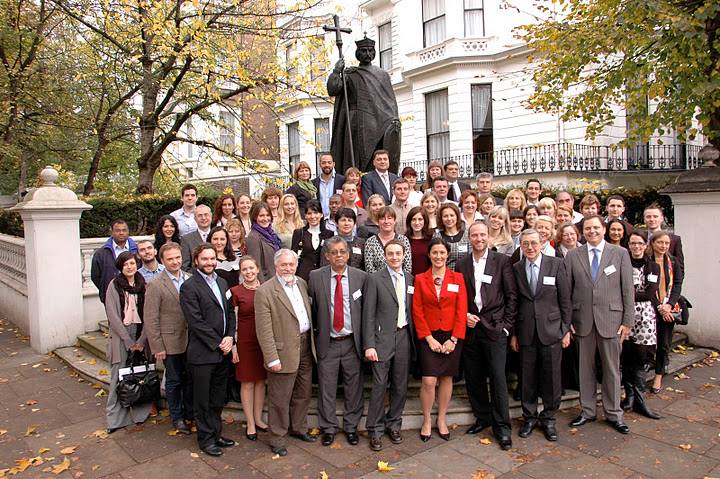
The Ukrainian Medical Association in the United Kingdom – an association of healthcare professionals of Ukrainian origin living in the U.K.
Compared with the post-war immigrants to the U.K., a relatively small proportion of the Ukrainians in this new wave have become involved in the activities of formal Ukrainian community organizations. Greater preference has been given to interacting with other Ukrainians through informal networks based largely on new social media and the Internet.
Russia’s full-scale war on Ukraine: refugees
After Russia’s full-scale invasion of Ukraine in February 2022, the United Kingdom introduced a family visa scheme for Ukrainians who have an immediate or extended family member in the U.K.
After this response was criticized, the government launched the Homes for Ukraine scheme to allow those without relatives in the U.K. to settle. People in the U.K. can nominate an individual or family to stay with them rent-free for at least six months. Refugees who come via the scheme can live and work in the U.K. for up to three years, and get access to healthcare, welfare, and schools.
As of 28 June, the government had issued 142,500 Ukrainian visas out of 161,500 applications received, and as of 27 June, 86,600 visa holders had arrived in the U.K.
Sources used: Ukrainians in the United Kingdom online encyclopaedia; Istorychna Pravda; BBC
The story was written as part of UWC’s special project on Ukrainian Communities: Facts and Personalities. The previous publication:


